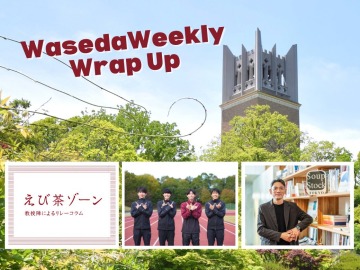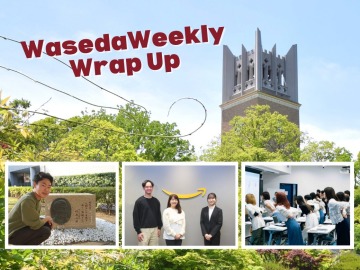Waseda University Student Created the Popular App “NauNau”
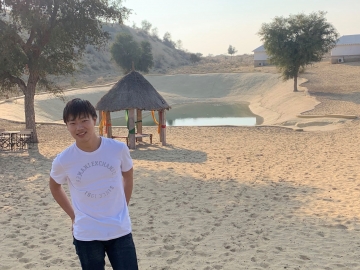
Natsuki Kataoka, a fourth-year student in the School of Creative Science and Engineering, has developed and operates “NauNau”, a location-sharing app that is gaining popularity among young people, with over 3 million downloads. Mr. Kataoka established Suishow Co., Ltd. in 2021 to operate and develop his apps and is also working in the blockchain and metaverse business. We interviewed Natsuki about his broad range of experiences. He explained that he decided to start his company around the same time other students were beginning to intern or job hunt. He recalls first gaining interest in web services during his internship in India just before entering university.
He plans to continue developing NauNau and expects it to become one of the next big SNS services after Instagram. Location-sharing apps like NauNau are a type of SNS that you can send without having to post. On existing SNS, more and more young people don’t post much on their own and just look at other people’s posts, but with location-sharing apps, you can see what your friends are doing without posting. Therefore, NauNau is an SNS that matches the preferences of young people and allows users to connect with friends in real life. He expects to see it continue to grow in the future.
This article is from May 16, 2023.
Japanese article:人気アプリ「NauNau」を生み出した早大生 趣味は新しいアプリをつくること
Internship at a School in Finland: Differences from Education in Japan Experienced Firsthand
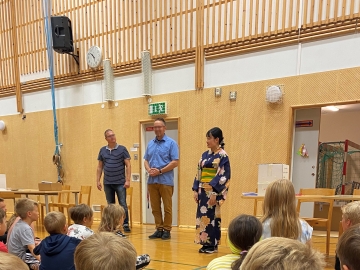
In 2022, Naoka Ozawa, a fourth-year student at the School of International Liberal Studies, interned in Finland. Ms. Ozawa has been interested in English education since she was a high school student and learned about English education in Finland, where the academic level is high. Naoka recalls, “I became interested in Finnish education when I was in high school and saw a video about Finnish schools in an English class. I remember being shocked to hear that despite having no homework and few class hours, Finland ranked at the top of the world academic achievement rankings and that most Finnish people can speak English.” She then wanted to experience and learn about the differences between Japanese and Finnish education.
She set three goals for her internship: to examine the differences in English teaching methodologies, to learn about an education system that values the individual, and provide the children with opportunities to learn about Japanese culture. Naoka learned that compared to Japan, Finnish school emphasizes comprehension of the content over memorizing grammar patterns, and students have a lot of time to challenge problems and ask questions openly to their classmates and teachers. The children were also divided into smaller groups so that students could get more attention on the individual level. To teach the children about Japanese culture, Naoka wore a yukata (a summer kimono) to school and also introduced about ninja tools and origami. Through her experience interning in education in a foreign country, she gained confidence in her ability as a teacher.
Japanese article:フィンランドの小学校でインターン 現地で気付いた日本との違い
Introducing the Unknown History of the Higashifushimi Campus
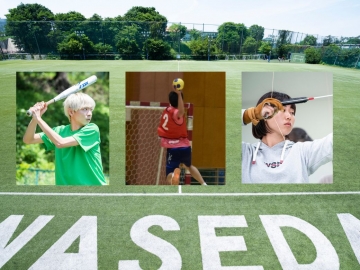 The Higashifushimi campus is also known as the “sacred place of Waseda sports.” We interviewed Professor Junichi Kasai of the Faculty of Sport Sciences about the history of the Higashifushimi campus. The campus has a wide variety of sports facilities, including a soccer field, an equestrian ground, a kyudo(Japanese archery) hall, a tennis court, the Higashifushimi Sports Arena, the Abe Isoo Memorial Baseball Ground, the American Football Field, a hockey pitch and a sumo wrestling field. Out of Waseda’s 44 physical education clubs, 13 of them practice on the Higashifushimi campus.
The Higashifushimi campus is also known as the “sacred place of Waseda sports.” We interviewed Professor Junichi Kasai of the Faculty of Sport Sciences about the history of the Higashifushimi campus. The campus has a wide variety of sports facilities, including a soccer field, an equestrian ground, a kyudo(Japanese archery) hall, a tennis court, the Higashifushimi Sports Arena, the Abe Isoo Memorial Baseball Ground, the American Football Field, a hockey pitch and a sumo wrestling field. Out of Waseda’s 44 physical education clubs, 13 of them practice on the Higashifushimi campus.
In 1902, the first 6 clubs were judo, kendo, kyudo, baseball, tennis, and rowing club. The facilities for various sports have also evolved throughout the years. For example, in 1905, the swim club was established in a rented farmhouse in front of Zushi Kaigan Station. The following year, the club began practicing at Miura Beach until the beginning of the Showa era, when a pool was built at the Higashifushimi campus . Eventually, the pool was demolished and a new one was built on the Tokorozawa campus . Today, students can take a softball, kyudo, or handball, etc class on campus.
Japanese article:東伏見キャンパスの知られざる歴史 早大生の特権と魅力の授業を紹介!



